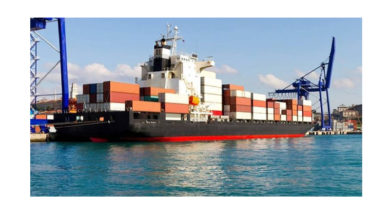Digital press profits vs traditional offset
By: Jim Aust, print industry consultant and business analyst
In analyzing a printer’s costs in a mixed work center environment (offset, digital, mailing/fulfillment), it’s generally necessary to go right down to the income statement level. I have learned that the vast majority of digital press users are extremely successful economically, even though it’s not always apparent to them because of the way their financial reporting is organized.
We work with executive management to split their business into multiple P&Ls (one for each major work center) and generate a one-time snapshot of offset, digital, mailing, etc. That exercise takes several hours, but when we are done we find that the digital press, on average, is generating 20-25% net profit, while offset is at 1-3%. I find this time and time again. The typical reaction is dismay. But they ultimately agree that the analysis is correct, in large part because their executive team and I did the analysis together.
Printers typically don’t think in terms of page counts, but I do because I work between the offset and digital worlds, and I need a common “unit.” We consider a page as one 8.5”x11”, one side. The printer will almost always print the other side, but that counts as another page.
Consider the average sell rate for traditional offset in the commercial print industry to be 6 to 10 cents per page, with a modest profit of 2% to 4%. Short runs should sell for more than 10 cents per page, and long runs can sell for less than 6 cents per page.
The digital side of the business has a different set of numbers. The average total cost per page is somewhere around 20 to 22 cents as an average for small to mid-size digital operations, but high volume printers might get it down to 10 to 14 cents a page. Run lengths don’t have as much of an impact on cost on a digital press as on a traditional offset press.
If you are an offset printer and confronted with those numbers, you might be tempted to stay away from digital. However, the general economics and profit levels for digital print are very healthy.
Digital really does pay for itself with a relatively small amount of printing, at least when compared to offset. Further, digital profits can often contribute more to the economic health of the company than offset does.
The impact of run length
Certainly, run lengths matter. The average run length for a sheetfed run in a commercial printer is between 5000 and 10,000 impressions. Runs can be as short as 500 impressions, or over 50,000 impressions. As mentioned earlier, the sell rate of the average job might be in the 6 to 10 cent per page range, but the long- to shortrun sell range would be 4 to 40 cents per page range.
While the run length for offset will certainly affect the sell rate per page, the profit margin is small for most printers. With a digital press, the run length will not have as much of an impact on job pricing. Even a short-run digital job will carry the same administrative costs as a long-run job, but press costs are more consistent, since make-ready time and materials are insignificant.
Plus, any digital jobs that are submitted through a web portal or storefront, significantly reduce the front office and prepress costs. The result is more consistent per-page pricing that does not move as much as offset jobs will due to run length. Further, with offset run lengths continuing to shrink, more jobs will migrate to digital. The demand for digital will continue to go up (and overall economics continue to improve) due to this shift, as well as the growing demand for variable data and personalized jobs.
Why is digital printing growing in a down economy?
With the drop off in offset printing in a down economy, digital printing has been growing. As marketing looks to increase their return on investment and spend less money, they look to personalized marketing, and thus, digital printing. This may accelerate the change to digital print as marketing sees the higher return on investment that personalization provides because more marketing companies are adopting personalization as they are forced to do with shrinking budgets.
Certainly one of the reasons for the growth in digital printing is the profit of digital (20-40%) vs offset (1-4%). But other reasons for the growth in digital are more basic and linked to the changes within the print industry in general. Run lengths for offset are getting shorter. Ten years ago, the average sheetfed run length in a commercial print operation was over 10,000 impressions. Today, the average run is under 10,000 impressions, and approx 30% less than 5 years ago, if not shorter. As a result, a larger percentage of print runs are less than 1500 impressions. A 1000 impression run might take only 10-15 minutes on press to run, and the make-ready can take over 30 minutes.
This leads to an expensive run and cost per page.
What happens when you do a 1000 impression offset run? You can’t sell that for 9 cents a page and make a profit. As you get in the 500 to 1000 impression range on a typical offset press, the true cost of those jobs runs between 35-45 cents a page. At that point, digital becomes very attractive. You can take a short run that is costing you 40 cents a page and move it to digital, which cuts the cost in half.
These economics are driving more work to digital, especially since new digital presses are generating offset-class quality. Further, industry leaders have long recognized that having a digital press (especially with web portals, mailing, and fulfillment) gives them the flexibility of producing the job on whatever press makes sense and at peak efficiency, and this configuration makes them more attractive to their customer base. They are viewed as a full service provider.
The true industry leaders are leveraging their production assets into positioning themselves as a marketing services provider to their customers rather than a print services provider. Another reason digital print is growing is variable data printing. Not only are offset print runs getting shorter, but marketing managers are looking for ways to maximize the impact of their message. Targeted and personalized messaging is growing.




